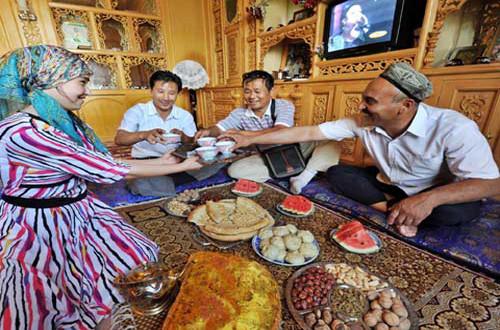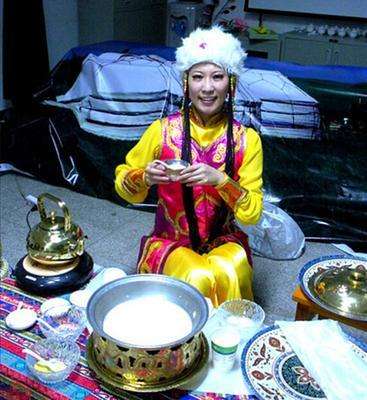Pouring Out Fragrant Tea
3 min readOn the vast Xinjiang oasis, whichever Uygur family you go to, in villages or cities, when you greet a hospitable host with a salamkon or yahshimusiz (hello), the host will take up an exquisite teapot and pour out a cup of strong tea for you. You will be attracted by the exquisite teapot and forget to drink the tea. The Uygurs have a special favor towards tea sets.

They call teapot samawa and ouxiuke in Northern Xinjiang and bichi in Chinese in Ili. The mountains and grass are already green in Xinjiang in May so we made a good choice to go to Ili. The well-known Han People Street is located here, where literati had loved to stay and business had been thriving, which rendered it a place steeped in history and culture. “There are no flowers in the so-called flower city, the Great Western Bridge is not really bridge and there are no Han people in the Han People Street. “Every traveler who comes to Ili will hear this popular piece of doggerel of Ili-the three strange things about Ili. The Han People Street is the old city proper. You may find carved doors of the shops left by people from Yangliuqing over a hundred years ago if you walk around the Han People Street. When the street was in its heyday, 90 percent of the shops on both sides of the street were opened by people from Yangliuqing. Now it is only a common lane. Only Uygurs who have lived here for a long time still remember Tianjinlike. This street at the far northwest border of China has a connection with people from Yangliuqing in Tianjin for a hundred years. In 1876(the second year during the reign of Emperor Guangxu), Zuo Zongtang, the governor of Shaanxi and Gansu, received instructions to supervise the army affairs in Xinjiang and led punitive expedition to the west against Mohammad Yaqub Beg troops. Tianjin was suffering from years of famine and wars when Mohammad Yaqub Beg invaded Xinjiang.

Yangliuqing suffered seriously and people fled to make a living. So, people from Yangliuqing, shouldering their carrying poles, followed the army of Zuo Zongtang to make living by doing small business. They migrated with the military camp, calling it “following the camp”. They had never expected that they would follow the camp for over 5,000 kilometers After the war, there were still many people from Yangliuqing coming to Xinjiang to make a living. By the time that the Qing army recovered the entire Xinjiang, itinerant pedlars from Yangliuqing could be found all over the regions around Mt. Tianshan. The southern Yining city proper is the region where these itinerant pedlars from Yangliuqing lived in compact communities, forming a bustling commercial street which was called by the Ili residents as the Han People Street. Later on, with the improvement of living standard, the descendants of people from Yangliuqing on the Han People Street moved out in succession The fact that there are no Han people on the Han People Street became the strangest thing among the three strange things about Yining.








